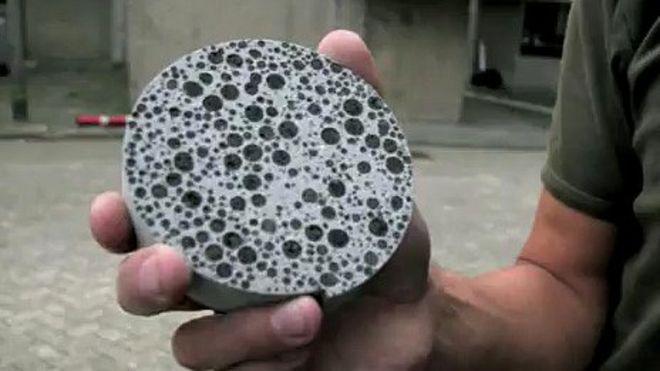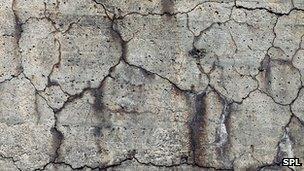News
Key Test for Re-healable Concrete

Experimental concrete that patches up cracks by itself is to undergo outdoor testing.
The concrete contains limestone-producing bacteria, which are activated by corrosive rainwater working its way into the structure.
The new material could potentially increase the service life of the concrete - with considerable cost savings as a result.
The work is taking place at Delft Technical University, the Netherlands.
It is the brainchild of microbiologist Henk Jonkers and concrete technologist Eric Schlangen.
If all goes well, Dr Jonkers says they could start the process of commercialising the system in 2-3 years.
Concrete is the world's most widely used building material. But it is prone to cracks, which means that structures need to be substantially reinforced with steel.
"Micro-cracks" are an expected part of the hardening process and do not directly cause strength loss. Fractures with a width of about 0.2mm are allowed under norms used by the concrete industry.
But over time, water - along with aggressive chemicals in it - gets into these cracks and corrodes the concrete.
"For durability reasons - in order to improve the service life of the construction - it is important to get these micro-cracks healed," Dr Jonkers told BBC News.
Bacterial spores and the nutrients they will need to feed on are added as granules into the concrete mix. But water is the missing ingredient required for the microbes to grow.

Concrete is the world's most popular building material, but cracking is a problem
So the spores remain dormant until rainwater works its way into the cracks and activates them. The harmless bacteria - belonging to the Bacillus genus - then feed on the nutrients to produce limestone.
The bacterial food incorporated into the healing agent is calcium lactate - a component of milk. The microbes used in the granules are able to tolerate the highly alkaline environment of the concrete.
"In the lab we have been able to show healing of cracks with a width of 0.5mm - two to three times higher than the norms state," Dr Jonkers explained.
The main challenge is to ensure the healing agent is robust enough to survive the mixing process. But, in order to do so, says Dr Jonkers, "we have to apply a coating to the particles, which is very expensive".
The team is currently trying to reduce the cost this adds to the process. But he expects an improved system to be ready in about six months.
The outdoor tests should begin after this; the team is already talking to several construction firms that could provide help.
The concrete will then have to be monitored for a minimum of two years to see how it behaves in this real-world setting.
"Then, if everybody's happy, we can think about trying to commercialize the product," said the TU Delft researcher.
Even if the healing agent adds 50% to the concrete cost, this makes up just 1-2% of the total construction cost. Maintenance is a much higher percentage of this total cost, so Dr Jonkers expects big savings through extending the concrete's service life.
Leave Message
If you have any problems or questions about our products or need our support and assistance, please feel free to write us, we will reply to you within 24 hours, and never reveal your information to the third party. Thank you!
PRODUCTS SEARCH
Quickly find productPRODUCTS LIST
- QT4-25 block making machine
- QMJ-10A Egg-laying Block Ma...
- QTY4-30 Egg Laying Block Ma...
- QTJ4-40 Semi-auto Block Mak...
- QTJ4-35 Semi-auto Block Mak...
- QTJ4-26 Semi-auto Block Mak...
- QTJ4-25 Auto Block Making M...
- Concrete Mixing Pump
- Trailer Concrete Pump
- HY600 Self-loading Concrete...
